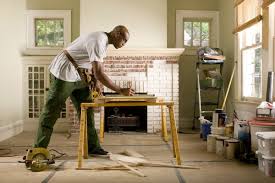Kitchen Remodeling Ideas
Now you have decided to remodel your kitchen or at least make some small changes, we have an amazing list of kitchen remodeling ideas for you. Even small makeovers may change the look of your kitchen immensely.
Let’s clear out one thing right at the beginning: whether you live with a family or by yourself, the kitchen is the busiest space in a house. From the coffee you whip up to get out of that agonizingly-wonderful slumber every morning to the last glass of water you sip every night, the kitchen remains at the center of your home. It is perfectly understandable as to why just like life, kitchen design also needs a breath of fresh air, or simply, a coat of fresh paint.
But of course, a kitchen makeover is much more than that. Not only does it seek to reinvigorate the space most dear to the house, but it also will go a long way in ensuring that a fresh, updated kitchen remains at the heart of a healthy family. Let us understand what exactly you need to change and how you can manage a complete kitchen makeover.
Updating your kitchen backsplash is one of the easiest and cost-effective ways to give a new look to your old kitchen. It is also the first area that should get your attention when renovating your kitchen because a) no renovation is complete without a new Backsplash and b) it is the most used/abused area of the kitchen. From spilled food to hot oil splashes, the backsplash takes it all and complains little.
When updating your kitchen backsplash, consider whether you want to incorporate new changes to the material or re-do the existing design. If you are short on time and money, consider a simple coat of paint. This way, you can incorporate a variety of styles depending on your existing material or simply add a shade. If you are artistically inclined, use a stencil to create a design in a secondary accent color. Different kitchen backsplash ideas might be enough if you can’t afford a complete renovation.
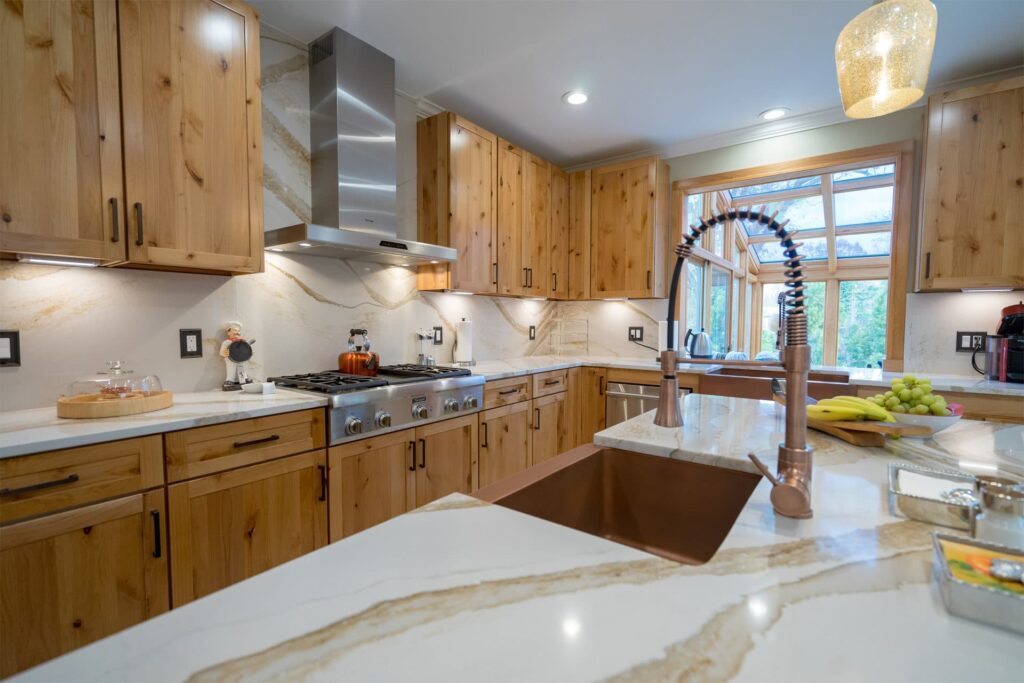
STEPS TO A KITCHEN REMODEL
Think about what you need
This step is all about how you use your kitchen, and finding the layout and features that fit your household’s lifestyle. Think about your priorities: how many people will be cooking and gathering here, and how they’ll need to move around in it. Do you need an addition? Or can you work with your existing kitchen footprint?
Research and plan
Ready to green-light that project and take the plunge? The best place to start is by formulating what’s commonly referred to as a scope of work and figuring out your preliminary budget. Both of these may be subject to change, so don’t feel like you have only once chance at this. Budget and scope are intertwined and often change many times during the design process as you become more educated and able to reconcile what you want and what you can afford. As a homeowner, you’re not expected to walk into this knowing what everything should cost. Remember, this is an educational process.
Find the professionals you will need
Even if you’re going the DIY route, unless you’re building your own kitchen cabinets and doing your own electrical and plumbing, you’re going to have to work with a professional at some point. It may be as brief as leaning on your salesperson to help you in selecting and ordering your appliances or cabinets, but it’s something to plan on either way.
Some people start by visiting big-box stores or cabinet showrooms where they can see everything. Many homeowners get referrals from friends or colleagues and start by hiring an architect or designer. Still others might work on their own with a builder or contractor. Pros are available to help you with everything from contracts and permits to space planning, budgets, choosing finishes and fixtures, shopping, ordering products, helping you set up a temporary kitchen, and managing your project from start to finish.
Schematic design
This phase includes sketches, space planning, preliminary floor plans and elevations showing the layout and cabinet sizes. I try to keep my clients focused more on layout and space planning, even though the temptation is to talk about what the kitchen will look like. But I find that getting caught up in the look too early can distract from the space planning phase.
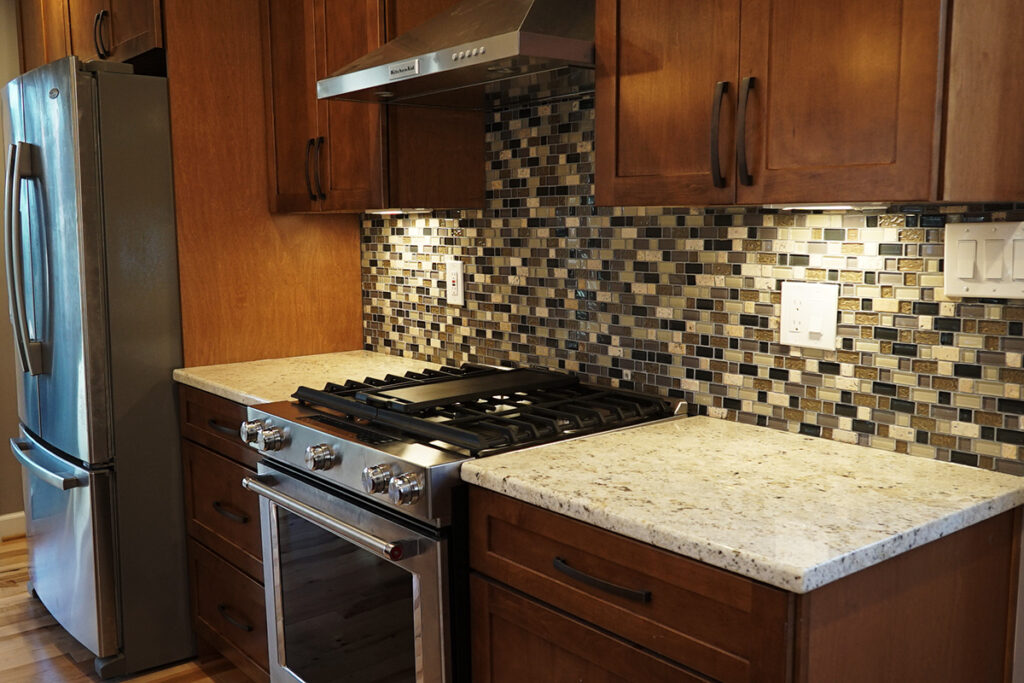
Kitchen remodel cost: Where to spend and how to save
No renovation adds as much equity to your home or is likely to be more enjoyed more than the kitchen. But kitchen remodel costs can get out of control quickly. When it comes to remodeling your kitchen, check out where experts suggest splurging — and where you can cut some corners.
Save: Cabinets
Although there’s definitely a case to be made for investing in the best cabinets you can afford — they consume more than 75% of your kitchen space, after all — the savings potential is just too great to ignore. Custom cabinets for a standard-sized kitchen can cost more than $40,000, whereas ready-to-assemble cabinets from a store like look amazing for a fraction of the price, says. That’s a savings of $36,000.
Splurge: Hardware and fixtures
Spring for bling! “You need just a few high-quality pieces for cabinetry to add the finishing touch — almost like jewelry adds to a fashion wardrobe. Every day, it’s in your hands so it needs to have a nice touch to it,” said, who is partial to polished nickel and soft satin brass that suit both traditional and contemporary interiors.
Save: Appliances
It’s not necessary to break the bank on a top-of-the-line stainless steel (still the standard) appliances, or on brands like SubZero or Wolf. points out that you’re not compromising a well-designed kitchen if you opt for perfectly excellent mid- and upper-range brands like Bosch, GE, Jenn Air and Fisher & Paykel. Just don’t be tempted by bells and whistles, which add unnecessary cost.
Splurge: Backsplash
“This is my favorite area to splurge, even on a budget kitchen, as there are so many wonderful tile options out there now, and a little bit of special tiles goes a long way,” said. Plus, installation generally costs the same whether you buy a tile you adore or a “crappy tile you’re not happy with,” said. That said, a classic white subway tile always looks chic and modern and can be had for as little as $2 per square foot. (But only buy it if you love it.)
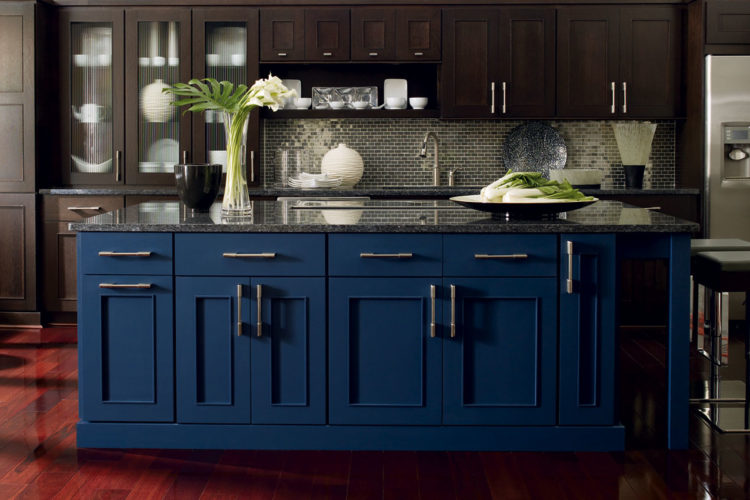
How to Handle Your Urge to Overspend on a New Kitchen
Ask 10 people what to splurge on in a kitchen remodel, and you’ll get 10 different answers. What constitutes an ideal space is highly subjective, and every kitchen remodel is a circus-worthy balancing act of money and priorities. Start by knowing what’s important to you, and then spend strategically.
Look to Your Layout
If you are happy enough with your kitchen’s existing footprint, leave it as is. “Keeping your layout is a surefire way to save money,” says, an interior designer. One of the biggest ways to drive up spending is by tearing down walls and reconfiguring the space, which usually requires expensive professionals to move plumbing and electrical work. Keep outside labor costs low and don’t shift the sink, lighting, and appliances without good reason. That said, if your biggest pet peeve is staring at a wall for hours while you wash your household’s endless stream of dishes, then a new open floor plan with an island sink might just be worth it to you. Pay more for the change, then take money from elsewhere in your budget.
Material Matters
Well-constructed, durable materials that better withstand the heavy wear and tear of meal prep, cooking, and cleaning are almost always worth the extra money. Avid cooks, in particular, will want to spend more on items that get a lot of use—particularly those that are fixed and hard to replace down the line. While it’s relatively easy and cheap to swap out a pendant light, tearing out and reinstalling an entirely new countertop requires a lot more money and effort. Choose a quality work surface the first time and you won’t have to turn around and shell out more cash in a couple of years when the original one chips or stains.
Consider Cabinets
Few things cause more sticker shock than new custo m kitchen cabinets. One strategy is to use existing cabinetry wherever possible, especially when it’s made of real wood and still in good condition. Fresh paint and new hardware go far for just a couple hundred bucks, if you tackle the work yourselves. (In fact, the more you knowledgeably DIY, the more you save, whether it’s demo, painting, or even plumbing.) For non-handy types, refacing is also an option, which updates the outwardly visible parts of an existing cabinet framework, namely the doors, side panels, and drawer fronts. It’s not as cheap as a couple of coats of paint, but can make old, outdated cabinets look like a completely new and different animal, without the custom price tag.
Treat Yourself
After successfully saving your pennies elsewhere, consider at least one decent splurge to take your kitchen to the next level. “Lighting is an easy way to upscale your project, without a huge price tag. Look to Etsy for reasonably-priced, but handmade, pieces that will bring a touch of something special to your room,” says. “You’ll support makers along the way, so it’s a win-win.”
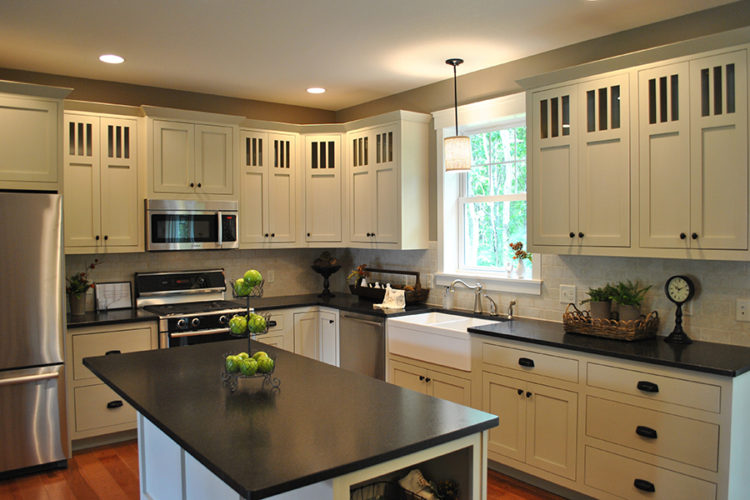
How to understand the cost for your next kitchen remodel the design build
Remodeling your kitchen is one of the most requested home renovation projects at Winthorpe Design & Build. Why are so many homeowners electing to give their kitchen a makeover?
You spend a lot of time in your kitchen. It’s the heart of a home, and as such, it should reflect your aesthetic and lifestyle. Maybe you’re ready to change your style. A remodeling project can help with that! But a kitchen renovation doesn’t just benefit you. A quality remodel can have a significant impact on the market value of your abode, giving it curb appeal and making it highly desirable to potential buyers.
Your kitchen is the space that sees the most traffic in your house. It’s a hub of activity, so it makes perfect sense that you should have a spot that both reflects your style and serves your needs to a tee. Perhaps you want to open up your space, increase its functionality, or turn your kitchen into a high-tech culinary haven. Or maybe you’re just ready to update your kitchen’s aging aesthetic. Whatever your reason for remodeling, you’ll need a plan.
If you’re not sure where to start with such an enormous undertaking, you’re not alone. A total kitchen remodel has a lot of moving parts, and there are plenty of executive decisions to be made. That’s why having an experienced and qualified team on your side is so important. You’ll want to know that the job will be done right the first time, on time, and within your budget.
So why work with a kitchen design team? Unlike the average homeowner, these are folks who are well-educated and certified in their fields. They know exactly what an extensive remodel entails, and how to deliver on a vision. They’re up-to-date on all the most recent trends, products, and materials. They’re professionals, and this is what they do
